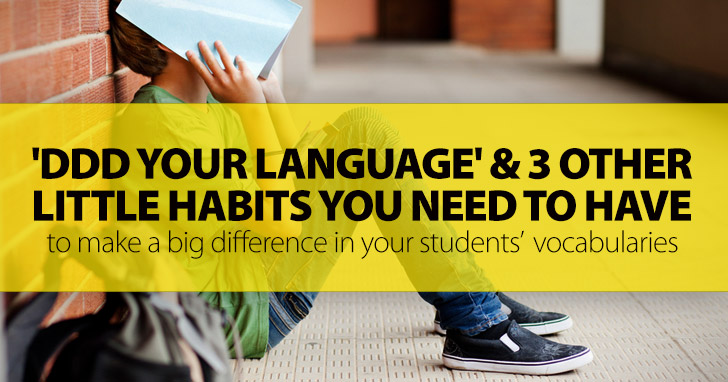More Than a Game: 6 Great Uses for Scrabble in the ESL Classroom


In fact, sometimes the volumes of new vocabulary can be utterly overwhelming. Other times, language students practically hunt for new words to learn. Paying attention in the following places may just expose your students to some vocabulary they may not hear in other, more traditional, settings.

Television may be a go to for most ESL students when it comes to vocabulary learning, but television has more to offer than the standard sitcom lexicon. For students with access to cable television, they might just be able to find a channel about any subject in which they are interested. Encourage your students to watch more obscure channels or programs, especially those that relate to their field of study. Animal Planet, Science, even QVC are all channels that will expose your students to a specific set of vocabulary they may not find in other places.
Ask.com suggests that the average person spends 45-62 minutes waiting every day. All those moments your students spend in line at the cafeteria, in a coffee shop, or for an elevator can be put to good use when it comes to vocabulary learning. Encourage your students to do a little innocent eavesdropping. Listening in on natural, native speaker conversations will challenge and expand their vocabularies as well as aid their listening comprehension skills!
What better place to learn casual, conversational vocabulary than a chat room? Like television, the topics of chat rooms are limitless, and if your students find one that interests them, they will have the benefit of seeing the words typed out. This makes a dictionary lookup easy and may smooth the vocabulary learning process.
Social media affects our lives in so many ways in today’s world. Following people on Twitter, linking with friends on Facebook and following blogs are all ways modern technology can bring good, unfamiliar vocabulary to ESL students, even on the go. Your students will also get to know some of the real language people are using in casual situations, but be warned. You may end up explaining alternative spellings and abbreviations for words that your students do not find in the dictionary.
For the most part, ads can be annoying, frustrating or disinteresting, but that does not mean they cannot be another great source for vocabulary. Point out to your students that billboards, magazines and commercials all give them an opportunity to learn new English words.
Can the grocery store really help your ESL students learn new vocabulary? Yes! Looking at packages and product descriptions on boxes and bags will increase sensory and value vocabulary for the students who take the time to pay attention.
Of course, music is a great place to learn new vocabulary provided the listener can distinguish what the person is saying. If the singer comes through a little muddled, though, a simple search on the title of the song will yield the lyrics that are not quite annunciated. Not only that, after your students have the lyrics, they will be able to sing along which might also improve their pronunciation.
Do not discount iPads, iPods or smart phones, either, when it comes to building vocabulary. Free apps like Word a Day will present new vocabulary in small doses, one per day, plus the definition to go with them. Take a look at it yourself and your vocabulary may expand, too!
Everybody has to eat, and most people nosh three times a day. By reading a menu carefully, your students can learn words to both expand their vocabularies and their pallets. So next time they have a meal out, challenge your students to find at least one word on the menu that is unfamiliar and add it to their lexicon.
For a real challenge, try playing Scrabble or another word game with a native speaker. If they purchase the app available for a minimal price, your students can use the teacher function, which points out the highest scoring word the player could have played on each turn. Though your students will still have to look them up in a dictionary, they will be using words like za, jo, qi and id before they know it. Be warned, though, the scrabble will give any player a run for his money, native speakers included.
All it takes is a little effort and a great dictionary.


